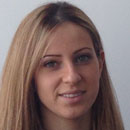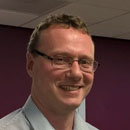 I’ve been to many previous of Newcastle University’s Leaning Teaching and Teaching Conferences – this was amongst the best so far, in my opinion. There were c.230 delegates, with the Boiler House filled to capacity for registration and the keynotes. The parallel sessions and lunch were in the nearby Barbara Strang Teaching Centre. The L&T conference was well organised and the whole LTDS team contributed to its smooth running.
I’ve been to many previous of Newcastle University’s Leaning Teaching and Teaching Conferences – this was amongst the best so far, in my opinion. There were c.230 delegates, with the Boiler House filled to capacity for registration and the keynotes. The parallel sessions and lunch were in the nearby Barbara Strang Teaching Centre. The L&T conference was well organised and the whole LTDS team contributed to its smooth running.
Welcome & Educational Strategy
The event was opened by Chris Day, who (again) mentioned becoming VC at possibly one of the most turbulent times for HE, with the changes related to the Office for Students (OfS), a hostile media, funding pressures, Brexit, pensions dispute etc. But he still managed to say all that in an upbeat way, tying it in to the University Strategy. Suzanne Cholerton gave a Keynote about the University Education Strategy, which is now in its final stages of consultation. In term “Education” is back in favour, covering the current terminology of “Learning, Teaching and Student Experience” (what goes around comes around!). On a more substantive note the 4 key themes of the Education Strategy were discussed; actively engaging students in their learning, L&T in a research-intensive environment, L&T enhanced and supported by technology, and developing the whole person – the latter to help students develop the skills needed for a rapidly changing environment, where many graduates will do jobs that don’t even exist yet. They need to out-compete the new wave of automation and AI. A new Graduates attributes framework is to be developed.
Celebrating partnership
This year the event benefitted from a significant presence of delegates and presenters from the international campuses in Singapore and Malaysia, and also from NU London & INTO. Sometimes things can feel distant and disjointed if you aren’t directly involved in these collaborations, so the conference gave a real feeling of togetherness as part of a joined-up institution. The student voice was also prominent with a whole-conference workshop reflecting on partnership and academic representation delivered by 4 of the student officers from NUSU.
Singapore
I came away from the conference with a much better appreciation of NU Singapore and the partnership delivering joint engineering-related degrees with Singapore Institute of Technology (useful to me as occasionally co-deliver workshops remotely to PGR students in Singapore). There is a marked contrast between the institutions (and a key reason for the partnership), with our traditional academic institution and the more industry focussed SIT, which brought together several technical polytechnics, in order to massively increase the proportion of young people in Singapore going into HE, but still focussed on meeting the needs of industry. The University year is organised by three 12 week trimesters and there are just 2 weeks between academic years; peer mentoring is well established.
 Many in FMS have first-hand experience of the challenges of teaching in different cultures, through NUMed. However, it was Matt Bentley’s presentation on the Integrated Work Study Programme at Singapore, which drew my attention. Interviews for University places are conducted by employers and all students do an industrial placement of 6 months, or more. Remarkably, 93% of graduates take up their first jobs with their placement provider. With increasing pressures on UK Universities to offer placements and degree apprenticeships there is no doubt lessons NU can learn from the partnership with Singapore (and MBBS and a few other programmes at NU which already have embedded placements for experiential learning). Of course, our cultural and economic context is very different, and leaning is valued in its own right, rather than just providing employability. There was also a point made from the audience about education preparing for life-long transferable skills, not just a short-term focus on getting the skills needed for that first job.
Many in FMS have first-hand experience of the challenges of teaching in different cultures, through NUMed. However, it was Matt Bentley’s presentation on the Integrated Work Study Programme at Singapore, which drew my attention. Interviews for University places are conducted by employers and all students do an industrial placement of 6 months, or more. Remarkably, 93% of graduates take up their first jobs with their placement provider. With increasing pressures on UK Universities to offer placements and degree apprenticeships there is no doubt lessons NU can learn from the partnership with Singapore (and MBBS and a few other programmes at NU which already have embedded placements for experiential learning). Of course, our cultural and economic context is very different, and leaning is valued in its own right, rather than just providing employability. There was also a point made from the audience about education preparing for life-long transferable skills, not just a short-term focus on getting the skills needed for that first job.
Learning Gain
The final Keynote was from Camille Kandiko Howson from King’s College London, who is leading HEFCE funded projects investigating “Learning Gain”. The back-drop to this was the simplistic requirements for league-tables and a comparison app (described by some as a “MoneySupermarket.com approach to HE”) being hinted at from then new Minister / Office for Students – potentially covering cost, drop-out rates, graduate salaries and other attributes, without any regard for socio-economic context. Camille gave an inspiring walk through the work of Learning Gain and the emerging and diverse approaches to measuring this. A simple definition of Learning Gain is:
“an attempt measure the improvement in knowledge, skills, work-readiness and personal development made by students during their time spent in higher education.”
Policy makers tend to have a very narrow perception of what Learning Gain is, but it can (should) include measuring broad dimensions; affective (e.g. self-efficacy, resilience etc), behaviours & cognitive abilities. There are a number of reports on the HEFCE Website from Learning Gain projects: http://www.hefce.ac.uk/lt/lg/ Get in there quick, as HEFCE is being replaced by the OfS from April 2018. The HE sector is very poor at retaining its outputs, outside of academic journals – remember the CETLS? only a sub-set of their outputs made it onto the HEA Website (sorry for the rant!).
Could the conference be more?
If I had to be critical, whilst c.230 participants is a reasonable number, I still think the University T&L should be bigger and aim to reach more people – given that learning and teaching is one of NU’s main activities. Likewise, ideally there should be more slots for presenters – there were 20 presenting slots in the parallel sessions, many of the nine 3 minute ‘lightning slots’ warranted more detailed presentations. Of course, there are costs to consider for a larger event, and the sad reality that not that many people submit proposals for presentations because of time pressures and other commitments. That said, FMS was well represented, with 9 of the 20 parallel presentations having contributions from staff in the faculty. Perhaps an online element to the conference would extend the reach of the event, enabling those too busy to commit to the whole event, to ‘dip in’ and participate in parts; on the other hand, the networking opportunities are better F2F (at least for most of our generations!).
Overall, this years L&T conference was a great event in my opinion.
Simon Cotterill, Simon.Cotterill@ncl.ac.uk

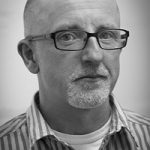




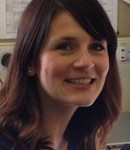
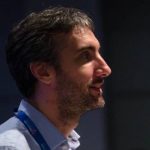
 Most studies relating to neuroeducation techniques are trialled in a school environment but very rarely get trialled in higher education. It is therefore unknown whether such techniques can be adapted for use in higher education. I therefore aim to trial a form of spaced learning during the MBBS curriculum to see if there is scope for it to be used as an educational technique in higher education. The original study on spaced learning by Kelly and Whatson used a 90 minute teaching session that included three 20 minute teaching slots separated by two 10 minute breaks. This is outlined on the left side of the image. To work with the traditional 50 minute lecture based timetable it is proposed to run two 20 minute teaching sessions with a 10 minute break in between, followed by a second session later in the day (right side of the image). Feedback will be gained from students on their experience of this style of teaching with the view that a more extensive study may be developed in future.
Most studies relating to neuroeducation techniques are trialled in a school environment but very rarely get trialled in higher education. It is therefore unknown whether such techniques can be adapted for use in higher education. I therefore aim to trial a form of spaced learning during the MBBS curriculum to see if there is scope for it to be used as an educational technique in higher education. The original study on spaced learning by Kelly and Whatson used a 90 minute teaching session that included three 20 minute teaching slots separated by two 10 minute breaks. This is outlined on the left side of the image. To work with the traditional 50 minute lecture based timetable it is proposed to run two 20 minute teaching sessions with a 10 minute break in between, followed by a second session later in the day (right side of the image). Feedback will be gained from students on their experience of this style of teaching with the view that a more extensive study may be developed in future.